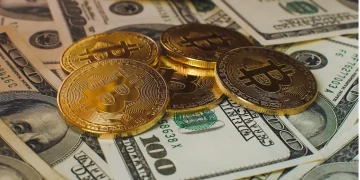- Tokenized gold trading reaches highest levels in two years.
- Growing interest driven by market uncertainty.
- PAX Gold, Tether Gold lead market activity.

Increasing interest in tokenized gold has driven trading volumes past $1 billion this week, marking the highest level in two years. This surge, recorded across major exchanges, highlights a shift toward safe-haven assets amid market volatility.
Rising inflation fears have pushed investors towards tokenized gold, reinforcing its appeal as a diversification tool. The trading increase also surpasses Bitcoin’s year-to-date performance.
Trading volume for tokenized gold hit over $1 billion, led by PAXG and XAUT. This growth reflects investor demand for assets linked to tangible commodities amid economic uncertainty.
PAX Gold and Tether Gold Dominate the Market
PAX Gold and Tether Gold dominate the market, representing over 98% of trading activity. These tokens, backed by physical gold, are increasingly featured on exchanges like Kraken, Binance, and Bitfinex.
Investors are seeking safe-haven assets as inflation fears grow, increasing demand for tokenized gold. This sector offers a hedge against market instability, with trading facilitated mainly on centralized exchanges.
Tokenized gold could transform the $13 trillion gold market by enabling fractional ownership, enhanced transparency, and broader accessibility on a global scale. The U.S. government could also tokenize its reserves for innovative uses. — Dan Tapscott
Tokenized gold as a diversification tool is gaining traction. As regulatory frameworks evolve, the market anticipates more integrations should regulatory clarity improve. Blockchain’s influence may further enhance sector transparency and accessibility.
Historically, tokenized gold has surged during periods of economic stress, offering security compared to fiat currencies. Experts suggest ongoing market volatility may sustain investor interest in these blockchain-backed assets.
Rising adoption of tokenized gold indicates a broader acceptance of cryptocurrencies supported by real-world assets. Long-term, the sector might benefit from enhanced liquidity and wider investor accessibility through technological innovations and potential regulations.


























